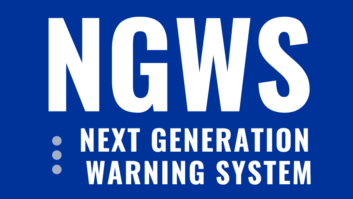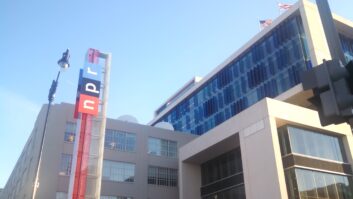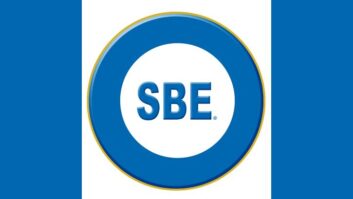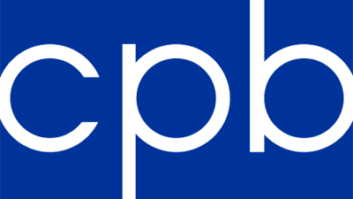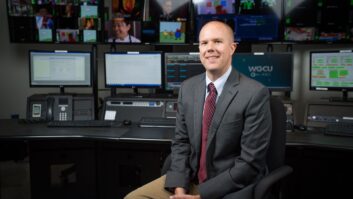Emerging technology could simplify facility infrastructure and reduce costs for broadcasters by eliminating reliance on hardware and utilizing the cloud instead.
A two-part session at this fall’s virtual Radio Show conference explored virtualization of traditionally hardware-based systems and the benefits of the fourth generation of HD Radio technology.
Moderator Roz Clark, senior director of radio engineering for Cox Media Group, framed the conversation as a look at the next generation of radio architecture, which will involve fewer hardware boxes in facilities as broadcasters move toward more service-based systems.
[Read RW’s free ebook “Virtualizing the Air Chain: Next-Gen Radio Architecture”]
“We know broadcast equipment is specialized, expensive and wears out. It requires maintenance and cooling. And all of these things are magnified by the number of stations you own, so evolving things forward and making it a more cost-effective and useful part of our business is a goal we all have,” Clark said during his introduction.
He noted that the NAB Radio Technology Committee is working with equipment manufactures to create common platforms to develop technology solutions.
“We are trying to simplify things, make it interoperable and adopt best practices, to develop technology to fit within the existing infrastructure — and the modern infrastructure as it evolves,” Clark said during his introduction.
PPM and EAS
The first panel included Jason Ornellas, regional director of engineering for Bonneville International Corp.; Alan Jurison, senior broadcast engineer at iHeartMedia; and Lakeya Jefferson, director of audio client engineering at Nielsen Media.
A goal of the NAB Radio Technology Committee, Clark said, is to make it easier and more cost-effective to implement HD Radio as the industry transforms into a digital transport delivery mechanism.
One part of that effort involves the software to insert Nielsen Audio PPM codes. Another is the implementation of Emergency Alert System content into an HD sub-channel stream.
Jefferson said Nielsen has taken its enhanced Critical Band Encoding Technology, or CBET, which is used in its PPM hardware encoders, and made it available in a software-based version to be integrated into third-party devices and products that may exist in broadcast facilities.
“We are excited to offer a wide variety of options when it comes to encoding. Nielsen is planning a beta release of our audio software encoder to a select group of audio processing vendors, including Orban, Wheatstone and Telos/Omnia, and AM stations with a wider production release later this year,” Jefferson said during the online session.
Field evaluation for AM stations began in early October with plans to release FM and streaming in 2021, Jefferson said.
Ornellas, who chairs the PPM Subgroup of the technology committee, said Bonneville successfully beta tested software-based PPM encoding using Orban processing at KHTK(AM) in Sacramento, Calif., and KSL(AM) in Salt Lake City. So did Cox Media at its stations WSB(AM) in Atlanta and KKYX(AM) in San Antonio, Texas.
“It was pretty seamless, with no issues for either the terrestrial AM or HD channel,” Ornellas said of the Bonneville testing. “We were able to see that the PPM encoding was being present right on the processor as well as the Multichannel Encoding Monitor. Nielsen was happy with the quality assurance they were expecting. This is a huge first step.”
iHeartMedia’s Jurison has been working for some time on getting the EAS component of the broadcast air chain put into software and virtualized into HD Radio subchannels.
“It’s been a challenge for (iHeartMedia) to get EAS onto the HD-2, -3 and -4 subchannels. We expect the next-generation architecture to move a lot of things out of defined-purpose hardware and into the cloud,” he said.
“We think some of the low-hanging fruit is the multicast channels. A lot of those stations just play music with few elements. As we migrate audio and radio into the cloud, these seem like good choices for us to virtualize.”
iHeartMedia uses a physical audio switcher that is tied to the EAS encoder to get EAS messaging onto the FM subchannels, Jurison said. The industry’s challenge, he says, is how to get EAS onto the subchannels without requiring hardware in the local market while remaining FCC-compliant.
He said Gen4 HD Radio technology and an embedded HD Radio importer/exporter will allow broadcasters to “virtualize” this process.
“It’s a whole new way of looking at HD Radio. The HD-2, -3 and -4 are perfect for us to begin putting things up in the cloud; but the cloud doesn’t have an EAS encoder,” Jurison said.
He explained that broadcasters will have the capability, thanks to the Gen4’s embedded importer/exporter, to connect the EAS encoder via 2wcom’s HDRCC, an HD Radio capture client appliance, which will encode all audio.
According to 2wcom’s website, the HDR-CC “requires a setup that has EAS audio connected to the capture client as well as a GPI to trigger the alarm. When the alarm is triggered, the three-channel HDR-CC logs into the importer and replaces all supplemental channels (HD2–HD4) with the alarm program. After the GPI is released, the HDR-CC logs out and the importer continues with normal operation.”
Jurison says Gen4 HD Radio technology will eliminate complicated audio switching requirements for emergency alerts. iHeartMedia is field testing the new system. The session included an explanation of how audio is delivered from an iHeartMedia data center in Cincinnati through its tech center in San Antonio to WWHT(FM)’s transmitter site in Syracuse, N.Y.
“We are essentially generating audio in the Cincinnati data center that goes through our WAN to the transmitter site in Syracuse with no hardware in between to generate the HD2 channel,” Jurison said.
In conclusion, Jurison said by using the Gen4’s embedded importer/exporter and 2wcom’s HDR-CC, broadcasters have the ability to insert EAS into any multicast channel from any data center anywhere across the country and eliminate physical hardware switching.
HD Radio Gen4
Part two of the virtual equipment evolution session featured presentations from broadcast equipment manufacturers Nautel, GatesAir and Rohde & Schwarz. The companies are working on Gen4 HD Radio virtualization technology for use in the cloud.
Moderator Roz Clark described an ongoing open collaboration to find radio architecture solutions that includes radio broadcasters, equipment manufacturers and Xperi, the parent of both HD Radio and the hybrid radio platform DTS Connected Radio.
“It’s really the three-legged stool approach between all of us. We want to simplify the architecture, we want to ease implementation to make it cheaper, better and faster. And also to leverage the technology that surrounds the broadcast business in general,” he said.
Philipp Schmid, chief technology officer for Nautel, said since a lot of the radio air chain is based on “purpose-filled boxes,” there is the need to look at the transition to a software environment and that HD Radio presents the opportunity to do so.
“However, HD Radio also adds cost and complexity,” Schmid said, “due to having to keep audio aligned between the FM and the HD-1.”
Nautel, which manufacturers transmission equipment, has partnered with Telos Alliance to develop a new Gen4 HD system using Omnia Enterprise 9s audio processing software and the Nautel HD multicast transmitter platform.
“The whole system can be applied in the cloud and can be scaled and is highly reliable,” Schmid said.
Nautel’s goal is “easy HD Radio conversion, cheaper HD Radio conversion, security and interoperability for third parties and legacy equipment,” he said.
A webinar of the Gen4 HD Radio system by Nautel is available on the company’s website.
Rohde & Schwarz manufactures the THR9 liquid cooled FM HD Radio transmitter and its HD component, the HDR900 built on the Gen 4 HD Radio architecture, according to information presented during the virtual conference.
“We suggest creating a functional block for all of the HD encoding. This block can live in the cloud or it can live virtually,” said Don Backus, account manager of radio transmitters at Rohde & Schwarz. “It gets us simplicity and it also gets us the ability to provide an abstraction from the hardware layer and that does allow for a virtual implementation or in the cloud.”
Backus said standardization on AES67, a technical standard for audio over IP and audio over Ethernet interoperability, and IQ over IP interfaces are key to the overall process.
“We want to define structures that enable less costly solutions with virtualized hardware and cloud computing,” Backus said.
To conclude the virtual Radio Show technology session, Kevin Haider, product manager, radio transmission for GatesAir, touched on the latest Intraplex IP link audio codec.
Haider said integrating IP tunneling capabilities within audio codecs provides multiple benefits for HD Radio applications, including maintaining relative delay between FM and HD signals across the network and providing reliable HD Radio E2X data streams across IP networks and limited bandwidth STL networks.
“It also allows for broadcasters to move their HD Radio exporter and importer to a studio where it is easier to maintain,” he said.
